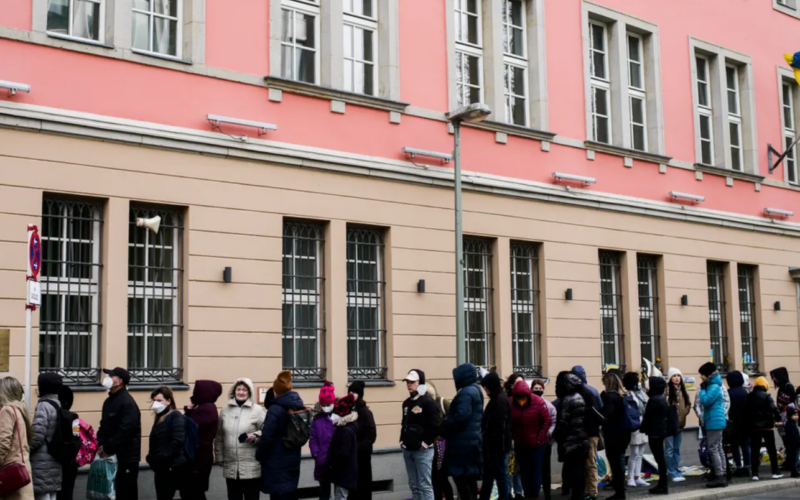Germany’s population witnessed a notable increase of 300,000 in 2023, reaching a new record of 84.7 million people, according to the statistics office’s latest report. The growth is attributed to net migration, acting as a compensatory factor for the nation’s low birth rate and aging demographic. While this rise aligns with the average figures observed from 2012 to 2021, it represents a considerable decline from the exceptional surge experienced in 2022 when hundreds of thousands of Ukrainian refugees sought refuge in Germany.
Migration has emerged as a pivotal and contentious issue in Germany, influencing both public discourse and political developments. The government’s response has included strengthened border controls, expedited deportation procedures, and concurrent efforts to address the demand for foreign workers through reforms easing access to citizenship. The surge of the far-right party Alternative for Germany (AfD) to second place in opinion polls underscores the significance of migration as a primary concern for voters.
The statistics office’s data reveals that net migration to Germany in 2023 was estimated between 680,000 and 710,000 people. While these figures reflect a substantial influx, they notably fall short of the extraordinary levels witnessed in 2022 when migration surged to 1.46 million individuals, primarily driven by the conflict in Ukraine. The decrease is significant compared to the peak migration year of 2015, during the Middle East conflict, when the figure reached 1.14 million.
Against the backdrop of shifting migration patterns, the German government has taken proactive measures to manage the challenges and opportunities posed by population dynamics. Strengthened border controls and a commitment to expedite deportations reflect efforts to maintain control over the inflow of migrants. Simultaneously, reforms aimed at easing access to citizenship signal a recognition of the role foreign workers can play in addressing labor market needs and sustaining economic growth.
The rise of the far-right AfD to second place in opinion polls underscores the divisive nature of the migration issue in German politics. As the government seeks a delicate balance between addressing the concerns of citizens and fulfilling economic requirements, the migration debate remains a central theme in shaping the country’s political landscape.
The statistics office’s report highlights the contrast between 2023 and previous years marked by exceptional migration events. The reduced net migration numbers in 2023, compared to the peak years of 2015 and 2022, indicate a shifting landscape influenced by geopolitical developments. The ongoing conflict in Ukraine and its impact on migration dynamics continue to shape Germany’s approach to population management.
As Germany navigates the complexities of migration, political leaders face the challenge of formulating policies that balance humanitarian concerns, economic imperatives, and the expectations of the electorate. The trajectory of net migration in the coming years will likely remain a critical factor in shaping Germany’s demographic landscape and influencing political decision-making.
The latest statistics on Germany’s population growth underscore the intricate interplay of migration dynamics, demographic shifts, and political considerations. While the numbers reveal a continued impact of migration on the nation’s population, the declining figures from the exceptional peak of 2022 indicate a changing landscape. As Germany grapples with the implications of migration, it remains a central theme in political discourse, demanding nuanced policies to address both the challenges and opportunities associated with demographic change.








